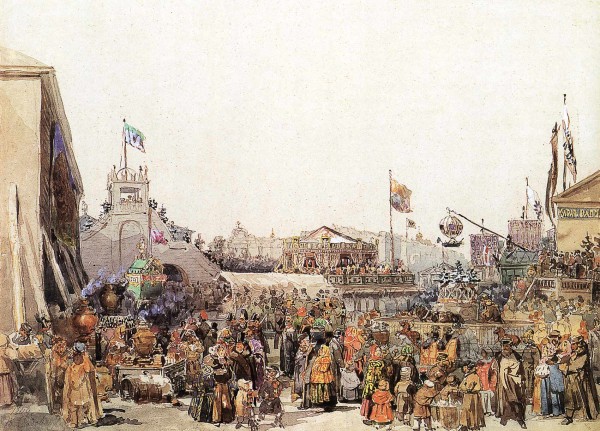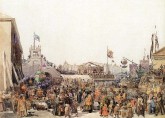St Petersburg, Fair Booths on Admiralty Square
1849
- watercolour on paper. 31,1 х 42,7
- Р-49564
- Period Early 19th century
- CategoryLandscape, Genre Painting
- Share
The most important Orthodox holiday is Easter, which also signalled the opening of the season of spring and summer outdoor fêtes. The names of the fêtes reflected the times of the year in which they were helds. There were accompanied by simple and circular swings. Various entertainments were organized beneath the swings and these were a prominent feature in the life of the Russian urban population. Also popular from the end of the seventeenth century onwards were such forms of entertainment as fairgrounds, puppet shows, traditional Russian Punch-and-Judy shows (Petrushka), camera obscuras (raree shows or raiki), farces and carousels. A unique and original colouring was lent to the festivities by the various forms of advertisement - the pressing invitations of the traders, the raree showmen, the bright signboards and placards. The fête therefore represented a bright and colourful chaos. The writer Vsyevolod Ivanov affirmed that one felt "confused and delighted "every visited a fête at the height of the festivities and overcome by the sheer volume of noise. Play and Passion in Russian Fine Art. St-Petersburg. 1999. P. 96.
Fairs and slopes for sliding down used to be set up on Admiralty Square at shrovetide and Easter. Noisy crowds of people would stream here from all over St Petersburg. Sadovnikov's watercolour gives a vivid impression of what these cheerful festivities must have been like. Play and Passion in Russian Fine Art. St-Petersburg. 1999. P. 97.

